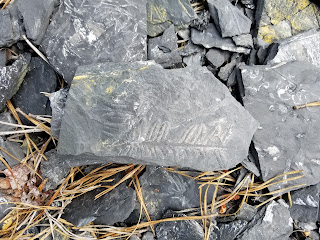That beautiful pale blue to bluish-green member of the Beryl family, treasured by gem cutters and prized by mineral prospectors worldwide. What rockhound wouldn’t be thrilled beyond description to crack into a gaping pocket laced with dozens of long, unbroken, gem-quality aquamarine crystals still lodged perfectly atop a gorgeous matrix?
In the fall of 2004, that once-in-lifetime-thrill came to amateur prospector Steve Brancato, as he searched for topaz on the chilly, steep slopes of Mount Antero, the 10th highest peak in the state of Colorado. The high-school dropout turned fulltime gem hunter first extracted a loose 25-carat aquamarine, and that blue crystal became the first of many, many more over the course of the next few days. Brancato had uncovered the largest and most valuable pocket of aquamarine crystals ever unearthed in the United States. Once extracted and restored, the impressive slab measured roughly 3 feet by 2 feet, and was encrusted with dozens of aquamarine crystals rising alongside a forest of gorgeous smoky quartz points.
In a touching move in honor of his mother, Steve Brancato dubbed his incredible discovery “Diane’s Pocket.” As the biggest aquamarine cache ever found in the USA, its value is difficult to appraise, but some experts have estimated this one-of-a-kind wonder to be worth well over a million dollars.
“Diane’s Pocket” was first displayed publicly at the Tucson Gem and Mineral show in February of 2005, before being acquired by Bruce Oreck, a trustee of the Denver Museum of Nature and Science. Oreck then donated his spectacular purchase to the museum, where it has since been on continuous display for all the world to enjoy. The incredible, million-dollar discovery of Diane’s Pocket, another Amazing Tale of Geology brought to you by Rockhounding USA.
































